KURT SCHWITTERS - A GREAT 1920s ORIGINAL MIXED MEDIA COLLAGE, MERZ DADA, RARE
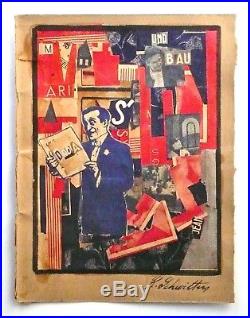
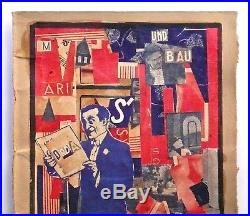

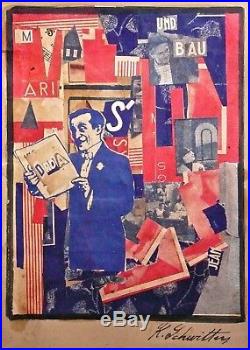
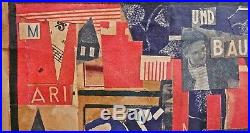
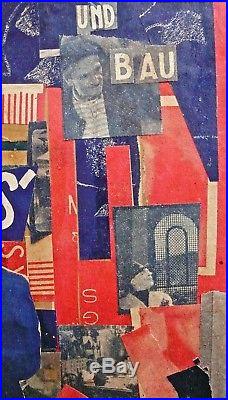
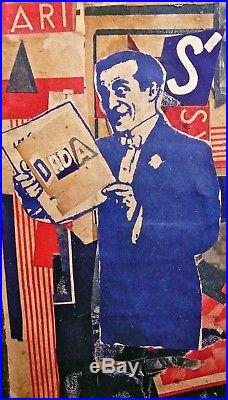
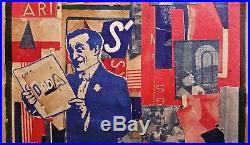
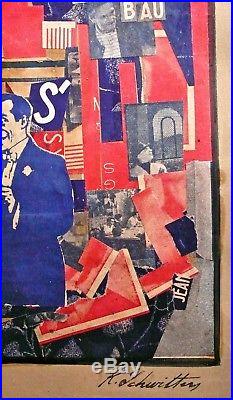
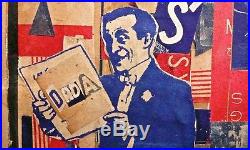
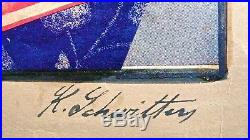
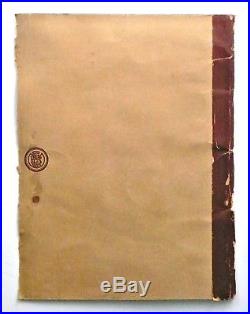

This is our Spacelab70 New Year's. OF 20th CENTURY MODERN FINE- ART. EVERYTHING IS GREATLY REDUCED NOW BY. 70% to 80% OFF OUR REGULAR PRICES! IT'S OUR CLEARANCE WEEK. And We Welcome Your Best Offers! AN ORIGINAL MIXED-MEDIA COLLAGE ON CARD. (With Printed Paper Matter, Cardboard, Paper, Ink & Crayon) Circa 1920s. After studying art at the. At the same time as OTTO DIX, GEORGE GROSZ and other members of. In 1911 he took part in his first exhibition, in. Progressed his work became darker, gradually developing a distinctly. Working as a technical draftsman (he was deemed unfit for military service) influenced his later work, using machines as metaphors of human activity. In 1918, his art was to change dramatically as a direct consequence of Germany's economic, political, and military collapse at the end of the.
In the war, things were in terrible turmoil. What I had learned at the academy was of no use to me and the useful new ideas were still unready....
Everything had broken down and new things had to be made out of the fragments; and this is Merz. It was like a revolution within me, not as it was, but as it should have been. In 1918 Schwitters met the. Whilst Schwitters still created work in an.Into 1919 and would continue to paint. Up to his death in 1948 , his first. Influenced in particular by recent works by.
Would appear in late 1918 , which Schwitters dubbed. After a fragment of found text from the sentence. Either in late 1918 or early 1919 , according to the memoirs of. The Dadaists rejected the application because of Schwitters' links to. In general, which were seen by the Dadaists as hopelessly romantic and obsessed with aesthetics. Though not a direct participant in the.Group's activities, Schwitters employed. In his work, used the word itself in his own collages, and would later give.
Throughout Europe on the subject, along with. In many ways his work was more in tune with neighboring. Approach; examples of his work were published in the last Zürich Dada publication.
November 1919 , alongside the work of. And his wife, the artist.
Whilst his work was far less political than key figures in Berlin Dada, such as. He would remain close friends with various members, including Hannah Hoch and Raoul Hausmann , for the rest of his career.
In the late 1920s he also became a well-known. His best-known work was the catalogue for the.
In 1924 he ran an advertising agency called. Which held the accounts for. Biscuits, amongst others, and became the official typographer for. Would become a major part of Schwitter's. Most of the works attempt to make coherent aesthetic sense of the world around Schwitters, using fragments of f. These fragments often make witty allusions to current events. "Merzpicture 29a, Picture with Turning Wheel". 1920 , for instance, combines a series of wheels that only turn clockwise, alluding to the general political drift Rightwards across Germany. Autobiographical elements also abound; test prints of graphic designs; bus tickets; ephemera given by friends.American POP ARTIST and COLLAGIST. Said, after seeing an exhibition of Schwitters' work at the. I felt like he made it all just for me.
Schwitters spent considerable time in. And later married a young English woman half his age. The collage is not dated but is circa 1920s. Assembled and glued down onto a tan cardboard sheet.And NOT a litho, print or copy of any kind. The paper view-size measures: 9 5/8" x 7 1/4" (24 1/2 cm x 18 cm). The drawing is HAND-SIGNED, in INK.
In GOOD CONDITION with some surface and edge-wear. Note: this work is almost 90 years old! Possibly of historical or political importance. But also with the option to. Now GREATLY REDUCED with a LOW, LOW starting price for an original work by this great and influential German artist. Please take advantage of our EXTRA-LOWERED SALE PRICE! Way b elow current market values! For this LISTED & HIGHLY COLLECTIBLE ARTIST! Now over 80 % OFF only for our New Year's Sale!But that price is now slashed! THIS 80 % OFF PRICE OFFER IS ONLY GOOD. FOR THE LIMITED TIME OF OUR EARLY- 2019 SALE!!
The item "KURT SCHWITTERS - A GREAT 1920s ORIGINAL MIXED MEDIA COLLAGE, MERZ DADA, RARE" is in sale since Friday, January 4, 2019. This item is in the category "Art\Mixed Media Art & Collage Art".The seller is "spacelab70" and is located in West Hollywood, California. This item can be shipped worldwide.
- Original/Reproduction: Original
- Artist: Kurt Schwitters
- Materials: Paper, Card, Newsprint, Photographs, Ink, Crayon
- Style: DADA, MERZ
- Listed By: Dealer or Reseller
- Era: 1920s
- Date of Creation: 1920s
- Type: Collage, Montage, Painting
- Features: Signed
- Subject: Visual Collage, Social Comment
- Originality: Original
